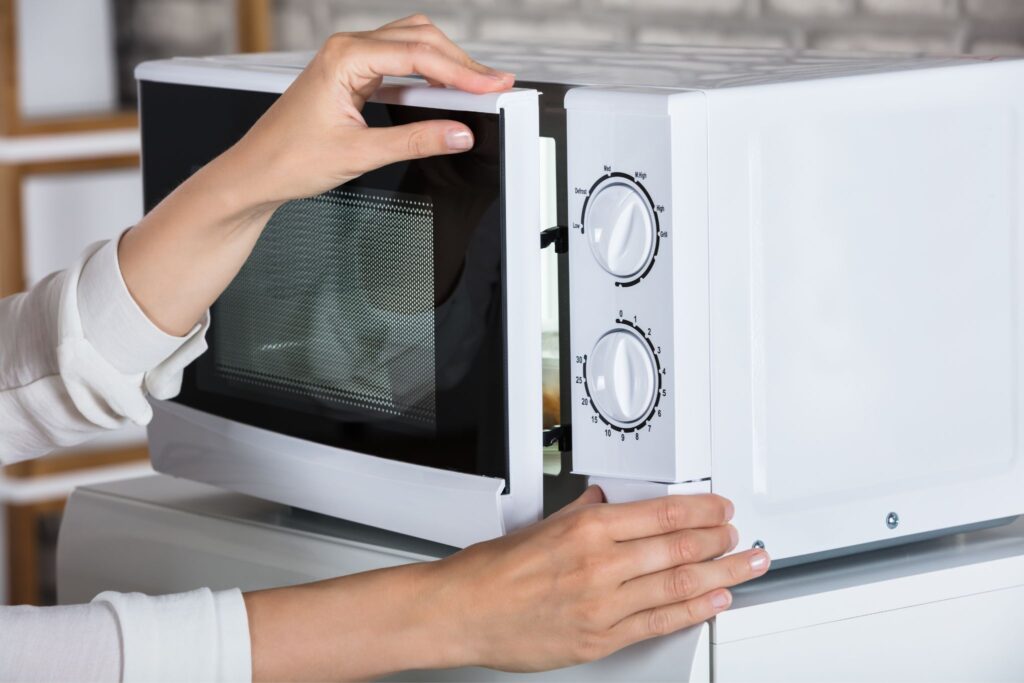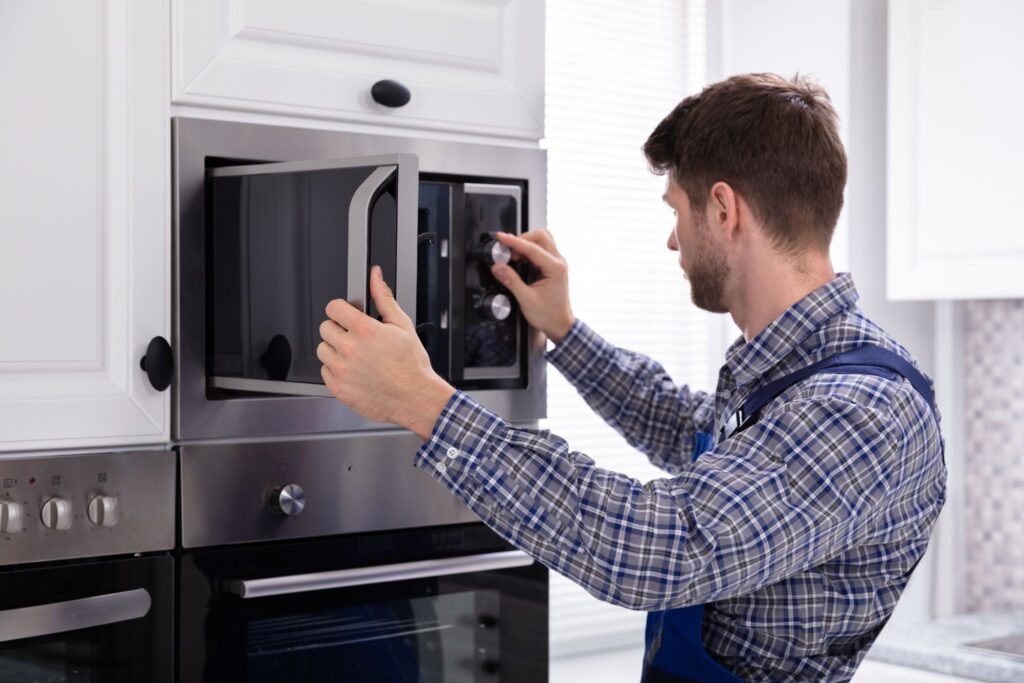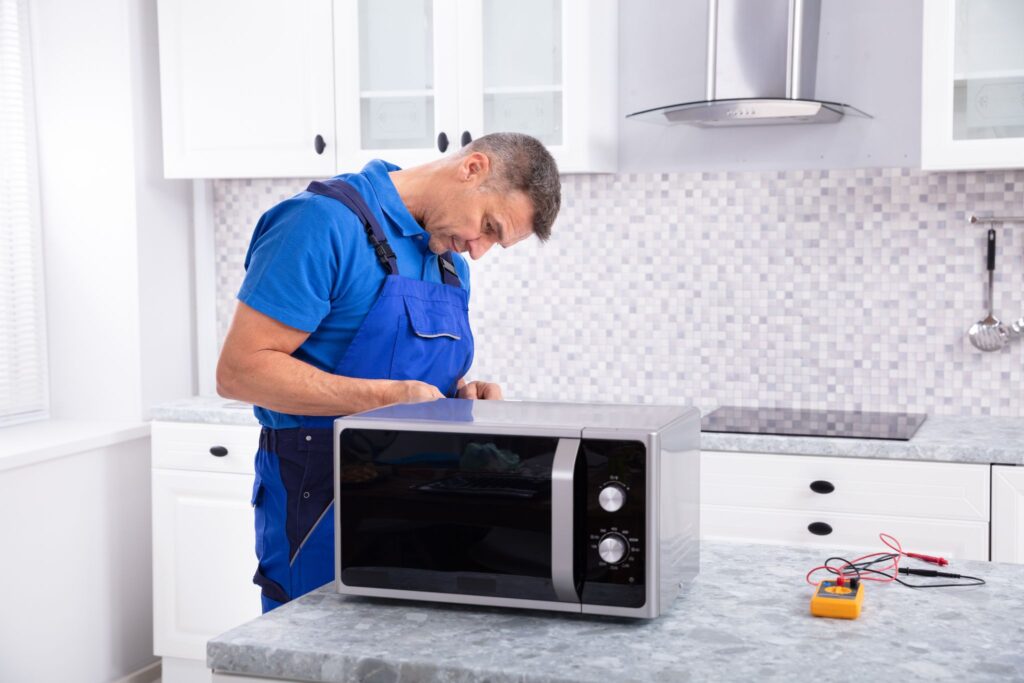Originally Created on: May 19, 2023 @ 10:12 am
Does the top of a microwave get hot? This is a crucial safety question many people wonder when using their microwaves.
While microwaves are convenient for quickly heating up or cooking foods, it is essential to be mindful of potential safety hazards.
The microwave oven uses electromagnetic wave energy to heat water molecules in food.
However, some electromagnetic energy can escape and interact with other objects.
You May Also Like: Do Microwaves Lose Power Over Time [+3 MAJOR Signs]
Table of Content
Does The Top Of a Microwave Get Hot?
Yes, the top of a microwave can get hot during use. Here is why:
Inside a microwave oven, magnetrons generate electromagnetic radiation waves that move around and collide with water molecules in the food.
This collision excites the water molecules and makes them vibrate, producing the heat that cooks the food.
Some electromagnetic waves escape through small openings in the microwave, including heating vents on top of the appliance.
When these waves hit objects outside the microwave, they can also excite the molecules in those objects, causing them to heat up.
Further info:
•The degree of heating depends on several factors, including the material and density of the object, its distance from the microwave vents, and the duration and power level of the cooking cycle.
•Metal objects will heat up the most since metals are good conductors of electricity and heat.
The top of the microwave, often made of metal, will absorb significant amounts of escaping radiation and become noticeably warm.
•Non-metal objects like countertops, plates, and hands can also heat up to a lesser extent due to absorbed microwave radiation from above.
However, plastics and ceramics trap less heat and conduct it away more slowly than metals.
•To avoid burning yourself, do not touch the top of a microwave while it is operating.
Also, be cautious of objects placed on or near the microwave during use. Wait 30 seconds after the microwave stops before removing food and opening the door.
Why Is The Top Of My Microwave Hot?

The top of a microwave gets hot when it is operating because part of the microwave’s energy leaks into the outer shell.
Microwaves excite the water molecules in food with microwave energy, causing them to heat up and cook the food.
However, some of that microwave energy inevitably escapes and is absorbed by the metal outer case. Since metal is a good conductor of heat, the top of the microwave heats up as that energy warms the metal.
The more the microwave is used and the higher the power level, the hotter the top will become. At high power levels for extended periods, the top can reach temperatures that risk burning someone who touches it.
The amount of heat leaking from a microwave varies by model. Higher-quality models typically have better shielding with more microwaves, resulting in less heat buildup in the outer case.
Also Read: Do Apartments Come With Microwaves? [YES or NO- Find Out NOW]
Nevertheless, most microwaves will have at least a slightly warm top after a few minutes of use.
What Happens If My Microwave Overheats?

Microwave ovens generate heat that can lead to unsafe conditions. If your microwave overheats, there are safety issues that should be addressed.
The first concern when a microwave overheats are fire safety. If your microwave generates excessive heat or sparks, stop using it immediately.
Overheated microwaves pose a serious fire hazard due to components melting or wires shorting.
When your microwave overheats, unplug it and allow it to cool completely before checking for damage.
The internal components like the magnetron tube, wiring, door latch, and handle may be defective, causing the overheating, and these issues need to be repaired or replaced before further use.
Another danger is exposure to microwave radiation; what happens if my microwave overheats?
Higher than normal temperatures and sparking indicate an issue with the microwave shielding, so excessive radiation leakage is possible.
Stand away from the microwave and keep children and pets out of the room until it has fully cooled down and been evaluated by an appliance repair technician.
Do Microwaves Have To Cool Down?
Microwaves do not require much time to cool down following use.
However, allowing some cooling can prolong their lifespan and make them safer to interact with.
Microwave ovens work by emitting microwave radiation, which excites the molecules in the food, causing them to heat up.
After use, many microwave components, like the glass plate and casing, can be too hot to interact with immediately and safely.
However, microwaves do not generate as much heat as conventional ovens and will cool down to a safe temperature within a few minutes after being turned off.
While microwaves do not need to fully “cool down” before reuse, briefly allowing the internal components to reduce in temperature following cooking can help prolong their lifespan.
Also Read: Why Do My Lights Dim When I Use The Microwave [BEST Answer +4 CAUSES]
High temperatures can cause damage to electronic circuits and wear on plastic parts over time. Waiting one to two minutes after each use before removing food from a microwave can help reduce this heat stress.
Is It Normal For The Top Of The Microwave To Get Hot?

Microwaves use electromagnetic radiation to heat food and liquid quickly. While microwaves are designed to contain this radiation, surrounding areas can still get warm during use.
The top of most microwaves does get fairly hot during operation, especially over long periods. The microwaving of food generates heat within the microwave, so the top covering acts as an exhaust point where extra heat can escape.
Specific components inside the microwave, like the magnetron tube and high voltage capacitor, generate heat that radiates out.
As long as the top covering stays warm but not hot enough to burn, the temperature is normal “for the top of the microwave to get hot” during and just after use.
For safety reasons, you should avoid placing any heat-sensitive objects like plastic containers or paper directly on the top surface of a microwave while in use.
Also, ensure that any cabinets above the microwave have enough clearance for the heat to dissipate correctly, at least 2 inches, to prevent longer-term heat damage.
Some amount of top surface heat is normal and part of how the appliance functions to cook your food.
Conclusion
While the primary function of a microwave is to heat food and liquids inside using microwave radiation, some of this energy passes through the top, bottom, and sides of the microwave, and they absorb some of that energy in the form of heat.
The top surface of a microwave, made up of materials like plastic and metal, absorbs some of the microwave energy and transmits it as heat, causing the top of the microwave to warm up during and shortly after use.
How hot the top gets depends on factors like how long the microwave was used and the power level set.

![Does The Top Of A Microwave Get Hot? [Genius Answer + 4 EXTRA Tips]](https://mykitchenapex.com/wp-content/uploads/2023/05/Does-The-Top-Of-A-Microwave-Get-Hot-Genius-Answer-4-EXTRA-Tips.jpg)